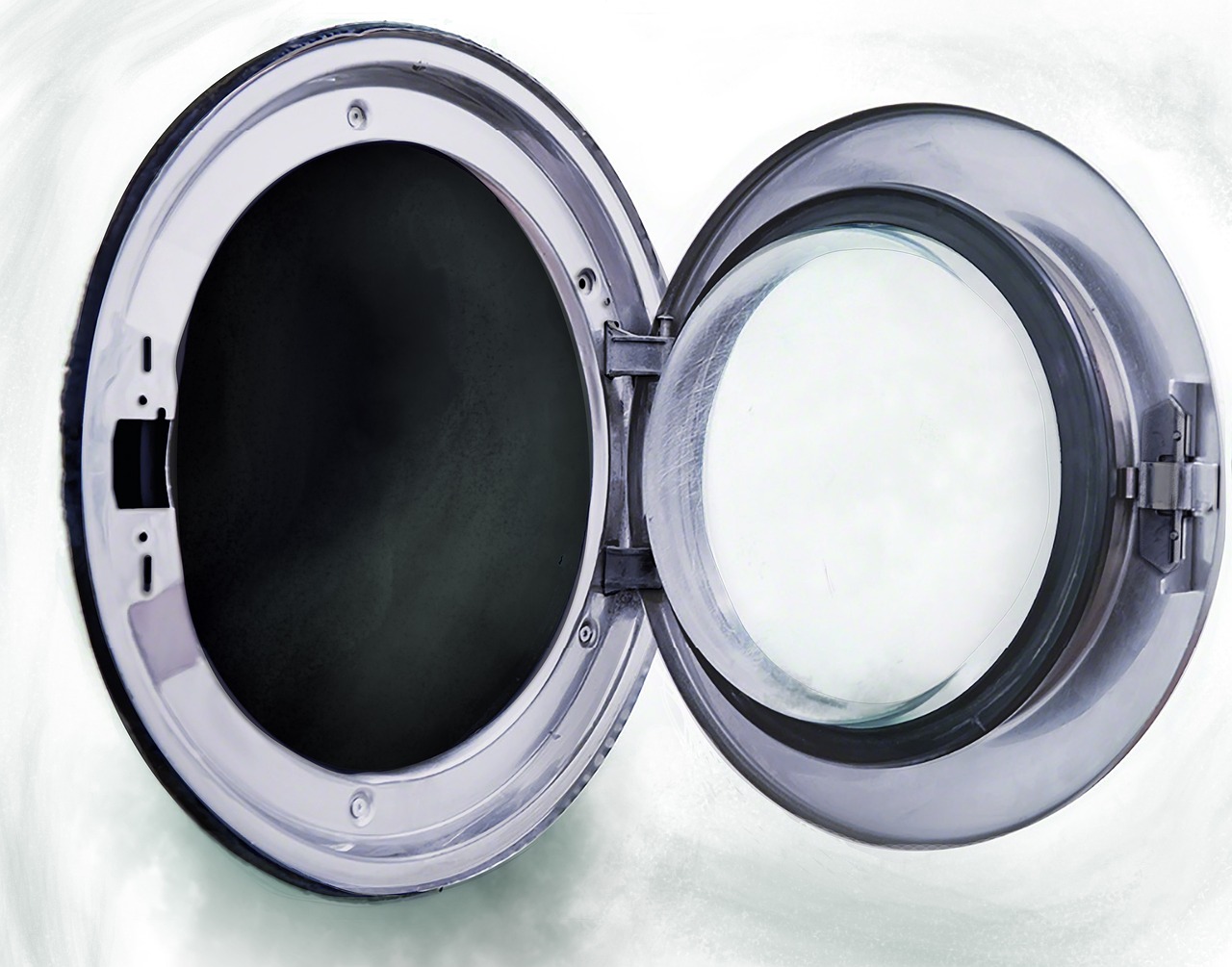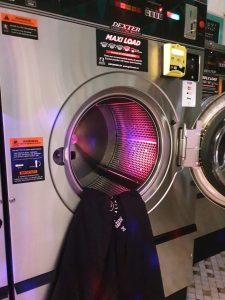
Ever since November 1, 1964, I have been reluctant to stick my hand in a washer or dryer to retrieve clothing. Alas, it is a fear I’ve had to overcome because repeatedly buying new sox and underwear was clearly not a sustainable practice.
Trying to take his jeans out of dryer dubbed "the green monster," a young athlete's life is changed forever.
My hesitation to hang out in laundry rooms began on that date 59 years ago when I heard the news about Bob Swaffar, a sophomore basketball player at nearby Oklahoma State University. It was on that Tuesday night when Swaffar reached into an industrial dryer in the laundry room of Lewis Field in Stillwater, Oklahoma. He was pulling out an old pair of Levi’s.
The green monster
The OSU athletes had dubbed the dryer “the green monster” because it was so huge and powerful. Essentially it was meant to dry an entire team’s worth of uniforms at once. It dried mostly by sucking water out of the clothing as it was spinning. Something like a megasize swimming trunk water extractor that you find in pool locker rooms.
On this Tuesday night, however, it extracted more than water. The green monster extracted Bob Swaffar’s right arm just below the shoulder.
The guy who decided at the last minute to play basketball at OSU, rather than go to Princeton, hit the floor fully conscious, but in a state of shock as blood spewed from his shoulder like a water fountain. Fortunately, his teammates were close by and rushed in to help him, aghast at the scene in front of them. Swafford was doubled over on the floor, and his arm was still in the dryer, covered in blood.
A fortunate irony
Ironically, teammate Gary Hassman (who would go on himself to become a doctor) had just been reading about a doctor in Boston who performed the first successful reattachment of a human limb, something which was new in the early 1960s. He had read that the severed arm was put on ice immediately after his patient had lost it, and that helped save it allow to become functioning once again.
Hassman was standing nearby and was pelted with fragments of bone and blood. He turned and saw the sight and yelled for one of his teammates to “Grab the arm and put it on ice!” That is what Jimmy Tom Watson did, although there was no ice around so he filled a tub with cold water and place the arm in it.
 Then he and teammate Lester Berryhill turned to comfort Swaffar who was still on the floor and dazed. His teammates grabbed towels and began wrapping them tightly around the open wound in Swaffar shoulder. Then one of them called for an ambulance.
Then he and teammate Lester Berryhill turned to comfort Swaffar who was still on the floor and dazed. His teammates grabbed towels and began wrapping them tightly around the open wound in Swaffar shoulder. Then one of them called for an ambulance.
The question
“What, what happened?” asked Swaffar.
“Nothing, Bob,” Berryhill whispered. “You just hurt your arm.” In truth, no one really knows how it happened. There was a foot pedal on the dryer to stop its spinning, but did anyone actually step on it?
The ambulance arrived, and Swaffar was rushed to University Hospital. It was there that doctors called an Oklahoma City physician, Dr. Rainey Williams, who had studied the Boston arm reattachment surgery, and was doing his own experimentations on animals. Williams immediately drove the hour-long trip to Stillwater to perform the revolutionary surgery on Swaffar, having gotten permission from the patient to do so.
The outcome
“I think it was successful,” Dr. Williams told Swaffar’s parents after the operation. It was only the third successful arm reattachment ever performed in the United States.
Swaffar’s basketball career was over, but he emerged with a partially functioning arm and hand, went on to become president of the student senate, graduate with a math degree in 1967, and then received Masters degrees in architecture and computer science from the University of Texas at Austin.
A successful career
He served a year in the Peace Corps and was hired in the early 1990s by UT to direct the computer lab for its School of Architecture and married a professor of German there. Swaffar retired in 2003 and devoted himself to the artform of making clay pottery which he had pursued much of his life. Today he is a ceramic artist living in Austin and exhibiting his work in shows and festivals like the Texas Clay Festival.
In 1994, Swaffar told reporter Berry Trammel, he owes his life to his teammates and that he is glad he decided to let Dr. Williams try the experimental arm reattachment surgery.
A “huge difference”
“[Having the arm] made a huge difference as far as my confidence and the way I functioned in life,” he told Trammel. “To be an amputee would be very difficult compared to the situation I have.”
He added that he’s learned to overcome both the still-occurring nerve pain and the inconvenience of not having two completely functional hands. He compares the use of his arm to the use that the late Sen. Bob Dole had of his war-damaged arm.
Most of those who have seen and bought his pottery don’t even know the artist’s laundry room story of 1964. And they would be amazed that such fine artwork could be turned out by a man who lost his arm. And then found it again.
(Note: Although I was a high school senior in Oklahoma when this 1964 accident happened and I remember it clearly, much of this story is based on the facts that my former colleague, Oklahoman reporter Berry Trammel, gathered.)
I am a writer, college professor, and author of several nonfiction books, including three on the decade of the 1960s. Several wonderful essays of gifted Retrospect authors appear in my book, "Daily Life in the 1960s."



Wow Jim, what a story. So grateful for his fast thinking teammates who saved the day and literally saved their friend’s arm! And bravo to Bob’s pursuit and creativity with clay.
But I won’t soon forget his traumatic story, especially on laundry days!.
Thanks, Dana. It’s been six decades, and I sure haven’t forgotten!
What an amazing story! So glad he was able to have such a successful live and even create art. I cam see why this tale would have put you off messing with laundry for most of your life.
One unguarded moment changes a life. But again the saying rings true: so much of life is how we choose to respond to it.
This is an amazing, and ultimately uplifting (no pun intended) story. Swaffer sounds like a remarkable fellow, and fortunate to have been able to have such a positive outcome. I can hardly fathom the drying machine that would tear off an arm, and assume they no longer exist or have safety features in place. What a disaster! Despite your trepidation, I think you are safe removing clothes from the dryer now.
Thanks, Khati. He is a remarkable guy.
Reading this, my mind went immediately to “The Mangler” by Stephen King. Of course, getting mentally transferred into a Stephen King story is a regular occurrence for me….
Inside a Stephen King story is a scary place to be! But this incident did have those elements!